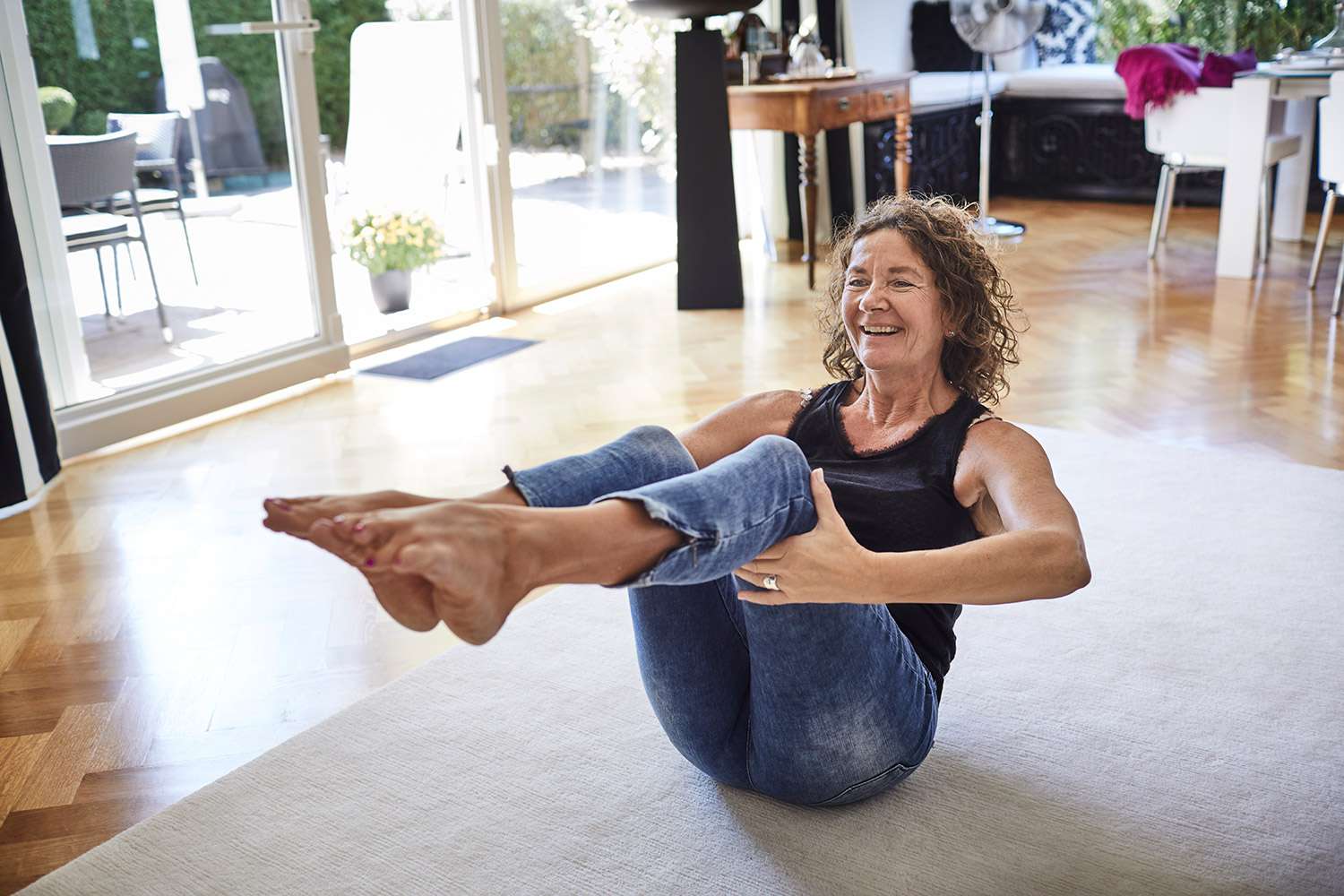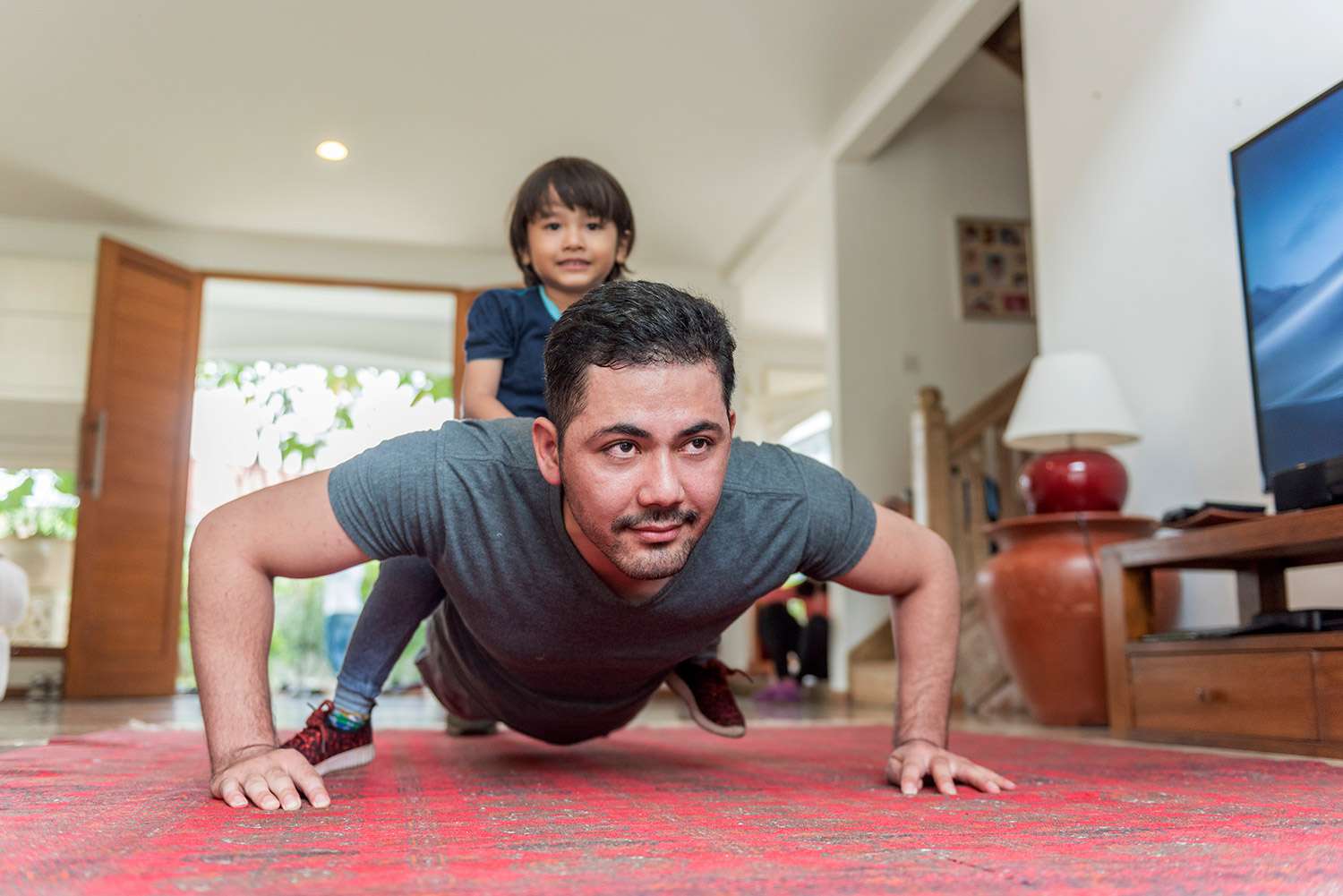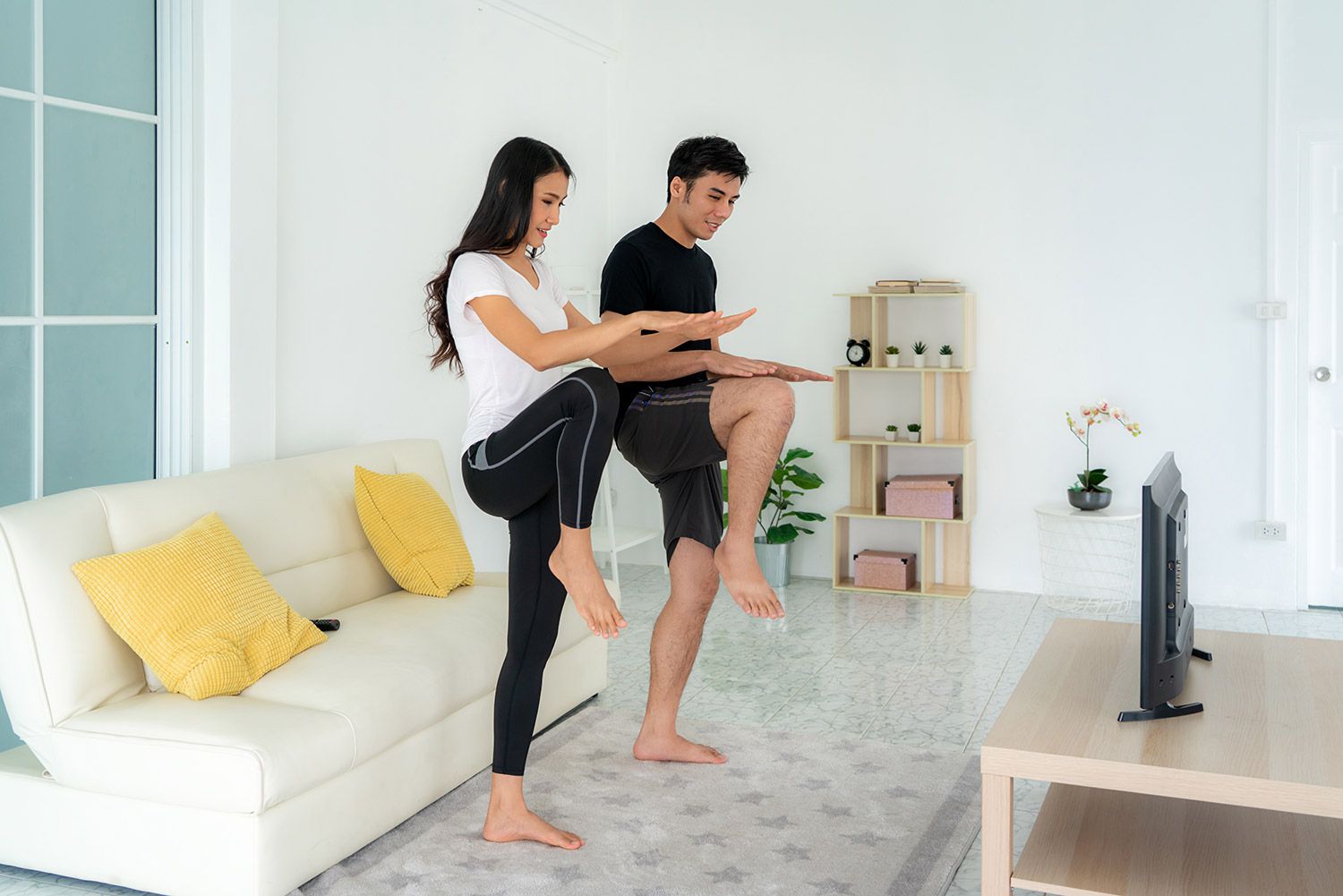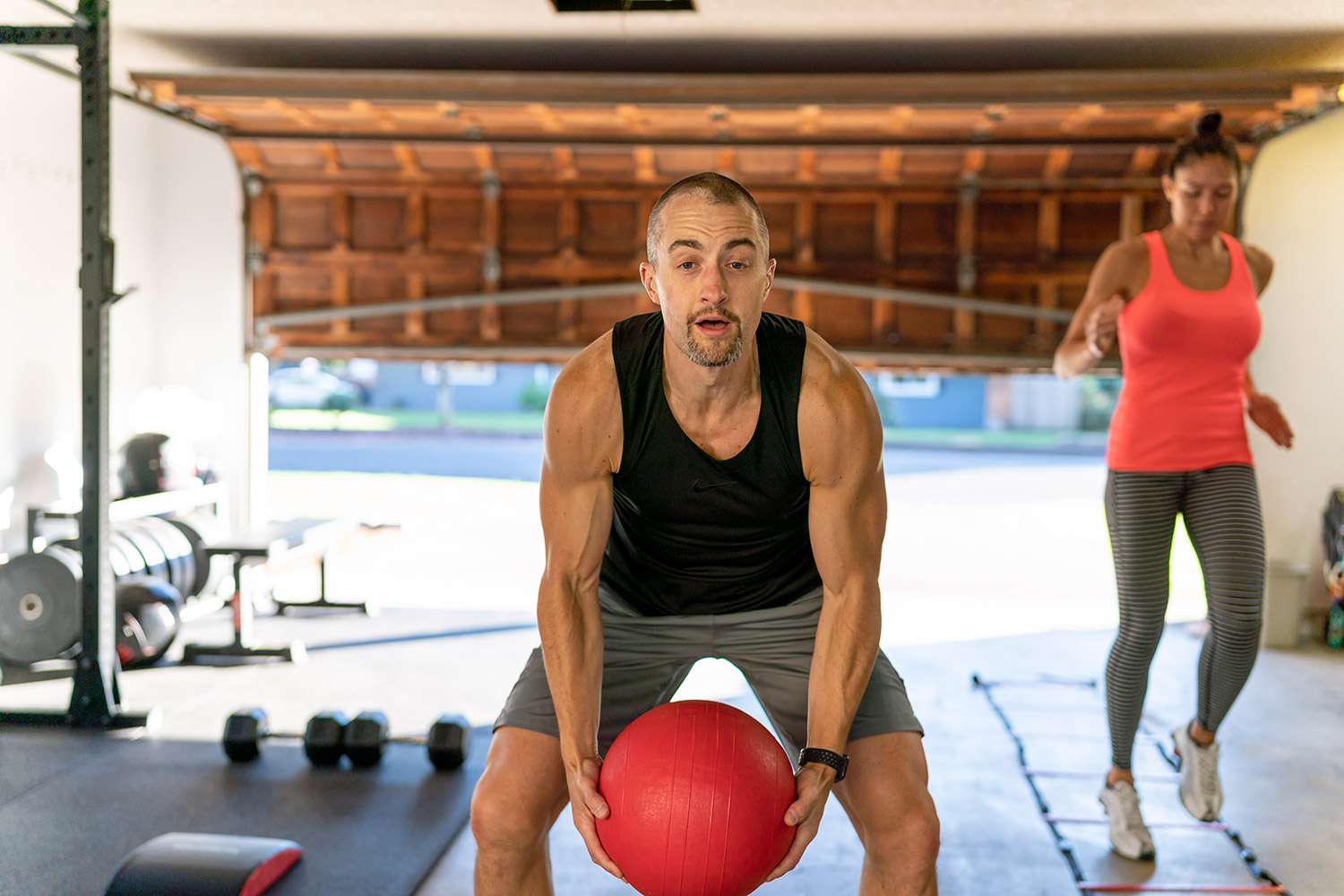
It's not breaking news that exercise is good for you—the benefits range from boosting your energy to adding years to your life. But many of us fall into the trap of forgoing any exercise when there isn't time to do enough exercise. You can't commit to a 30 minute Peloton session, let alone an hour-long jog with friends, so why bother?
It's especially true now, when a global pandemic has (in the best case scenario) left many of us overwhelmed, making fitting in a workout feel as impossible as enthusiastically booking a Mediterranean cruise.
The overburdened can take heart, though. A study recently published in the British Medical Journal indicates that while both moderate workouts and short bursts of high-intensity exercise have health benefits, the latter increased lifespan slightly more, helped participants get more fit, and increased their quality of life.
The long-held standard to target for exercise is "150 minutes per week of moderate-intensity physical activity, which is basically a brisk walk," says Dr. Edward Phillips, assistant professor of physical medicine and rehabilitation at Harvard Medical School. Or, based on the standards listed in the CDC's 2008 Physical Activity Guideline for Americans, you could do vigorous exercise and cut your time in half.
But while the time goals remained the same, the agency's 2018 update eliminated the requirement that bouts of physical activity had to be at least 10 minutes to count toward the weekly movement goal. In that most recent update, any amount of physical activity counts toward the weekly goal. This, along with the BMJ study findings that short bursts of high intensity exercise may lead to better health and well-being, is great news for those of us who are already wearing athleisure 24-7: At least when we do find those extra few minutes, we're already dressed to start sweating.
The obvious bonus of doing high intensity interval training, or HIIT, is that you can shoehorn four-minute fitness sessions into breaks in your day, and get practically the same results as you would with much longer but less intense workouts. That means rather than having to save your binge-watches for long slogs on the treadmill, you can just cram in a quick workout during the ads on Hulu, and go back to couch-surfing.

How do you know if your exercise counts as intense enough to get the benefits? Dr. Phillips recommends the "talk test:" If you can talk and you can sing, that's light exercise. With moderate exercise, you can talk but you can't sing, and if you're working vigorously, you can't finish your sentence. So to get the benefits of a short, high intensity workout, aim to push hard enough that you're not able to carry on a conversation or sing along to your queued up Lizzo playlist.
Dr. Phillips notes that going from being inactive to even moderately active reduces your risk of premature death by 72%. "Can you come up with a drug or a surgery, anything on the market, that's more potent than that?" he says. "And along the way, it makes you feel better, sleep better, have more patience, improve your joy of life, your function, your sex life, and your sleep."
In addition to the physical benefits of high intensity workouts—including general health and weight management—the mental health advantages are just as powerful. (Considering we're in the midst of a national mental health crisis, any low-commitment activity that has stress-relieving properties is a good thing.)

"During this time, the mental health benefit is so important," says Dr. Stephen Thomas, chair of Thomas Jefferson University's department of exercise science. "It's such a good way to get that endorphin release."
"You don't have to go for an hour-plus run," he says. "You could do a couple quick sprints, some plyometrics, squats, or push ups, get that burst and really change your mood."
That "runner's high" you often hear about tends not to come until you're well into a run, Thomas says, meaning you could maximize your time and the endorphin surge by going for a sprint around the block, or standing in place and doing burpees, squats, and lunges. The endorphins come quicker, and tend to stick around a little longer, too.
"There's a little bit of a carryover effect, more so than with a lower or moderate kind of exercise, which can lead to a boost in mood," says Thomas. "It could boost focus, and help you be more efficient."
So to recap: that's 15 minutes per day that could increase your longevity, improve your mental health and give you some much-needed energy and focus. Convinced yet?

How to incorporate HIIT into your life
As with any new exercise regimen, remember to consult with your doctor first. "Your heart is a muscle as well, and if it's not in a healthy state, it's not going to be able to handle" sudden high-intensity exercise, Thomas says. He also advises to make sure you're properly warmed up, even just with a few simple stretches, before starting. To ease in from home, try an on-demand fitness platform, like Obé, which includes HIIT and dance HIIT programs, or a YouTube class, like the one taught by fitness maven Toni Mitchell.
Mickey Myvett, a National Academy of Sports Medicine-certified trainer who coaches clients at the spa at Four Seasons Hotel New York Downtown, suggests sneaking in a session first thing in the morning, at lunchtime, or in the late afternoon, to help combat an energy slump without caffeine.
She provided workout suggestions for each time of day; each 15-minute session calls for 30 seconds of exercises like push ups, mountain climbers, high knees, lunges, and invisible jump ropes, with 30 seconds of rest in between each set. You can mix up the roster of exercises, just aim to work as hard as you can for those 30 seconds (remember: you shouldn't be able to sing or talk during the set).

———————
Wake Up & Work: One to three sets, 30 seconds each of: glute bridge, reverse crunch, mountain climbers, push up, back extension, with 30 seconds of rest in between each.
Lunch Break: One to three sets, 30 seconds each of: squats (shooting heart rate up), butt kicks, high knees, invisible jump rope, alternating lunges, with 30 seconds of rest in between each.
Afternoon Pick-Me-Up: One to three sets, 30 seconds each of: Inch worm, World's greatest stretch, bird dog, T-spine rotation, fire hydrant, with 30 seconds of rest in between each.
And if you just can't break a sweat midday, Myvett says to find time to move in any way. "A five minute stair workout—going up and down steps at home or work—or even a five minute walk to get lunch helps your central nervous system perform," says Myvett. "Remember: Anything counts as long as you're moving!"
Source: Read Full Article
